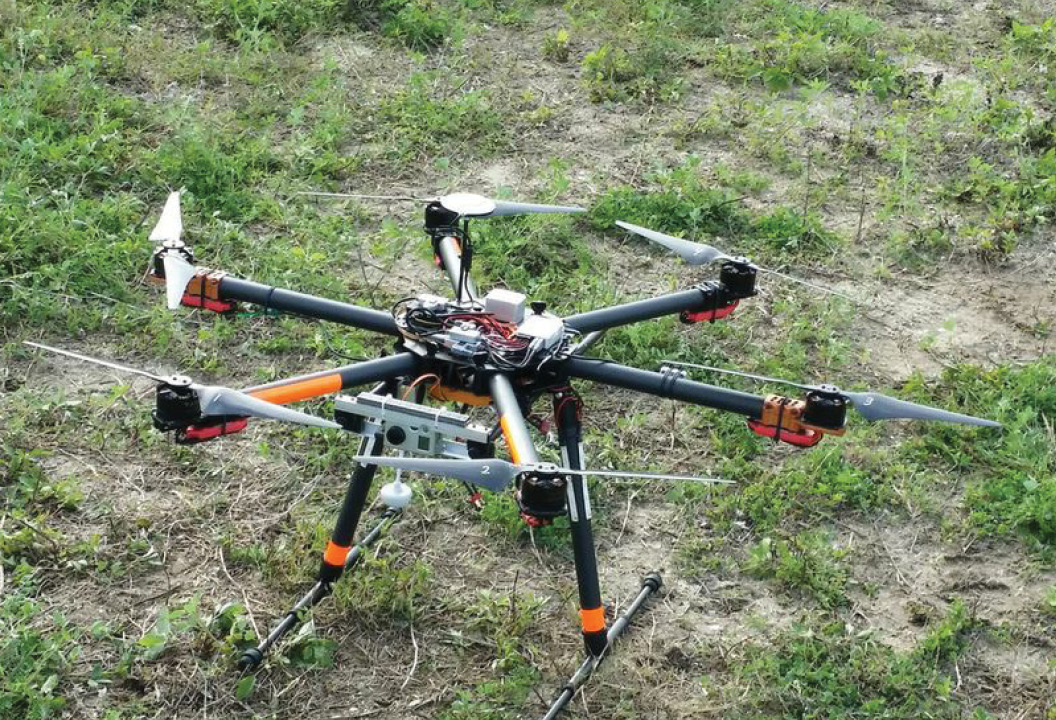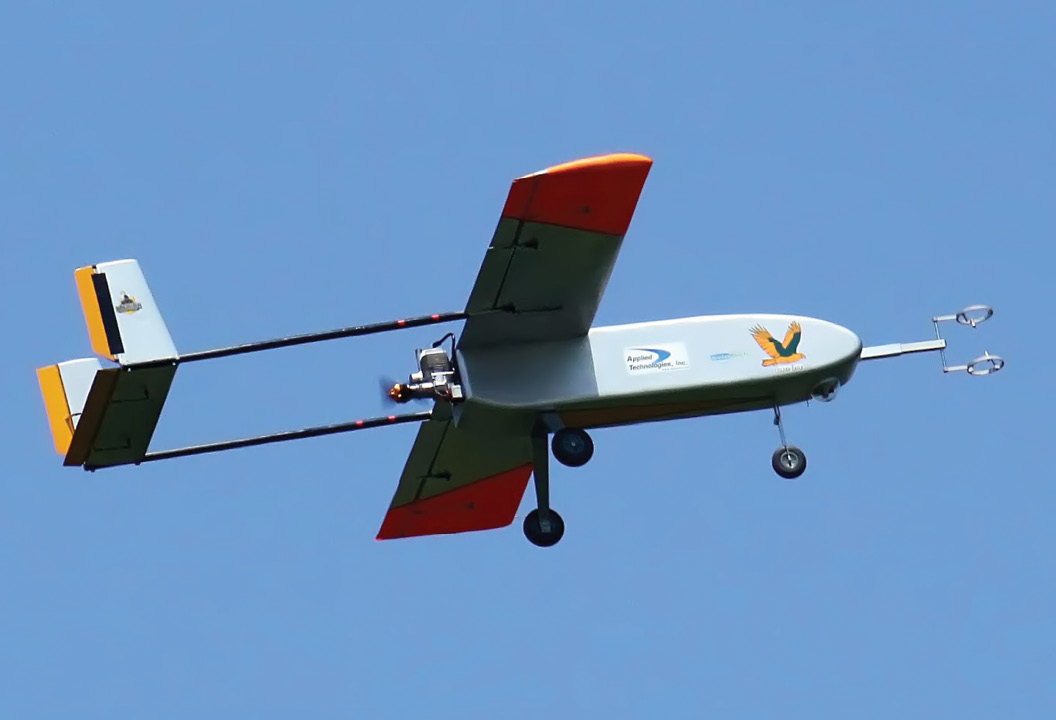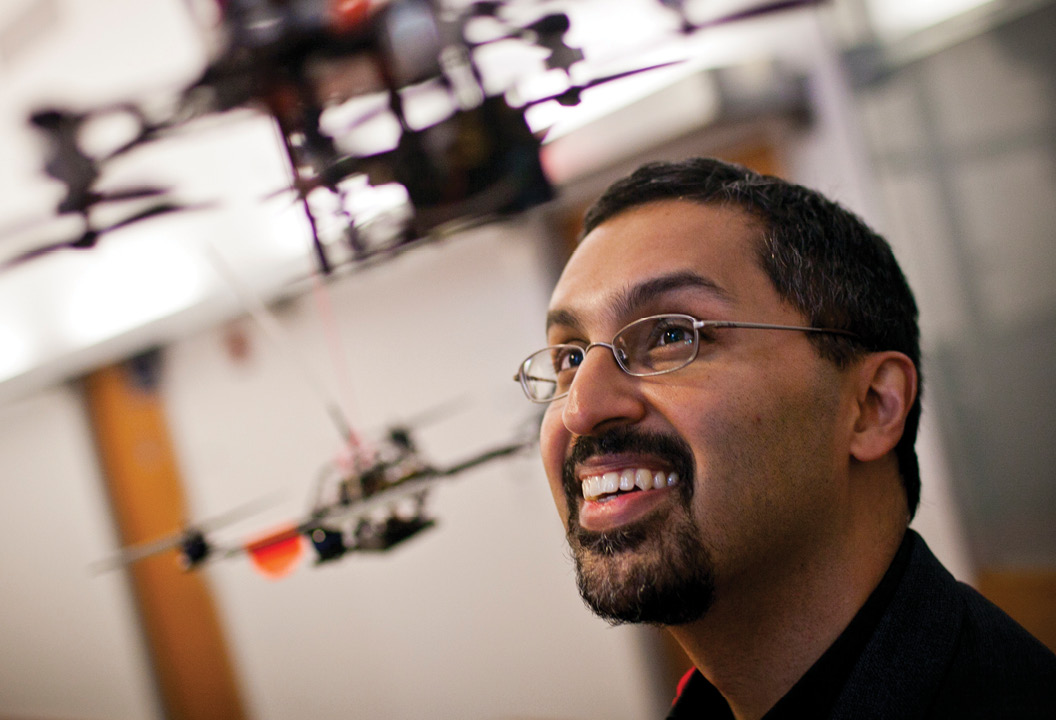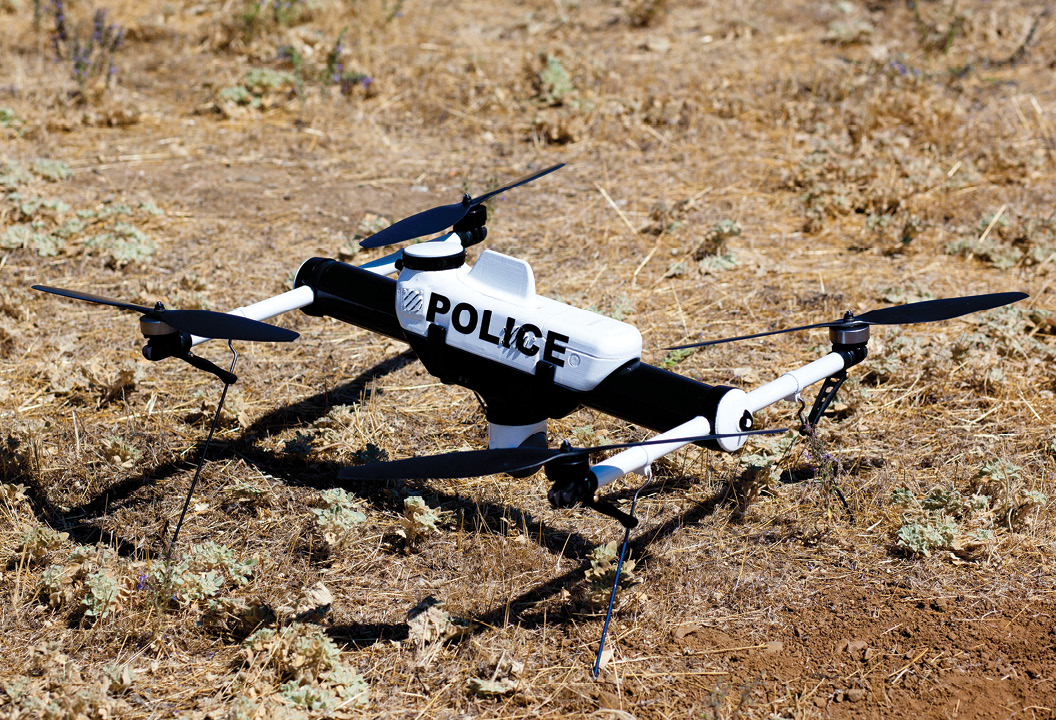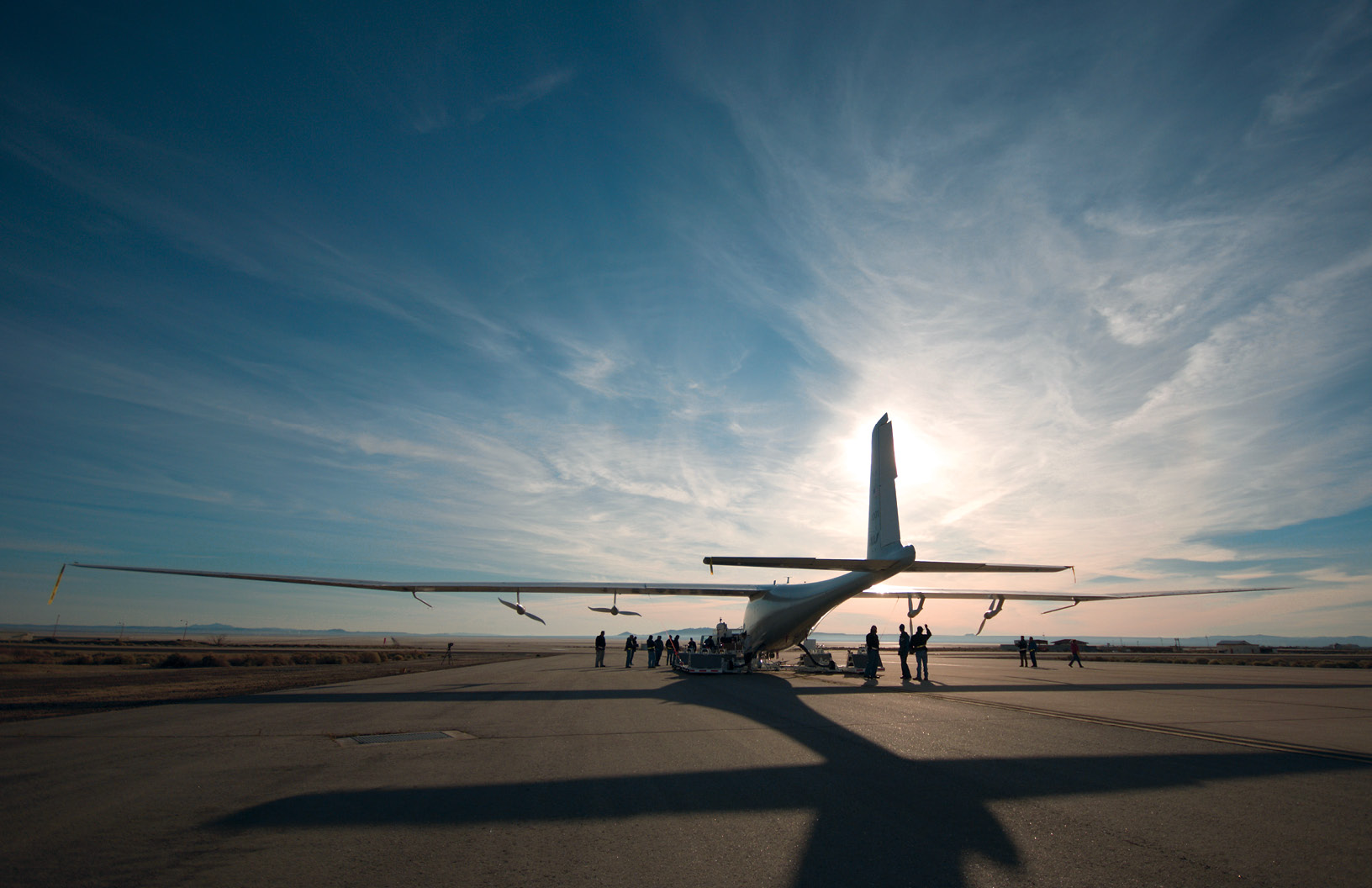
The Global Observer from AeroVironment.
Photo Courtesy of AeroVironment, Inc.
Like teenagers who used Facebook to invite over a few friends, aviation officials seem to have gotten more than they bargained for when they invited proposals for test ranges to help speed integration of unmanned aircraft into the nation’s skyways.
At the direction of Congress, the Federal Aviation Administration (FAA) set out to create a network of six ranges where Unmanned Aircraft Systems (UAS), commonly called drones, could be tested and the results used to craft the rules needed to allow those aircraft to finally begin operating commercially. Now there are nearly 20 test ranges in operation or under development—all intent on securing a toehold in the UAS industry. How the FAA handles the competition between them will almost certainly shape the industry for years to come.
The marching orders for the test range approach are in the FAA Modernization and Reform Act of 2012, which was signed into law on Feb. 14, 2012. Lawmakers told the agency to stand up six test ranges by the end of 2013. On Dec. 30 the agency calmly announced the selection of range operators in Alaska, Nevada, New York, North Dakota, Texas and Virginia. Profiles of these ranges, whose FAA role lasts until Feb. 2017, can be found immediately after this story.
The competition leading up to that announcement, however, was anything but calm. Galvanized by the promise of a foothold in a new multi-billion dollar industry, 25 teams in 24 states crafted alliances between their universities, economic development officials and local companies. They lined up support from their congressional delegates and submitted their plans to the FAA. Vast stretches of airspace, networks of laboratories and experienced researchers anchored some proposals while other teams had less seasoned capabilities and range plans that were, perhaps, more aspirational. Whatever the differences, it was evident during interviews with the teams that they all had one thing in common—clarity about what was at stake.
“There are lots of predictions out there for how much money is going to be invested in unmanned systems,” said Robert Becklund, director of the Northern Plains Unmanned Systems Test Site in North Dakota. “Depending on who you ask the number’s pretty big. You hear a number like $80 billion of investment in unmanned systems in the next 10 years—so that’s a pretty intriguing number.”
The competition was not just about winning a piece of that billion dollar prize—it was also about not losing. Officials were keenly aware, said Becklund, that those states able to create a favorable climate for the new industry were likely to siphon jobs away from other locales. Given that UAS technology could eventually reshape other industries like farming, the implications of missing out were profound.
With so much on the line it should have been no surprise that the December announcement did little to alter the playing field. Inside Unmanned Systems has interviewed nearly all of the 25 teams. Of the 19 disappointed applicants, at least 13, some now counting former rivals among their members, are going forward with their plans—and more than a few are doubling down on their efforts.
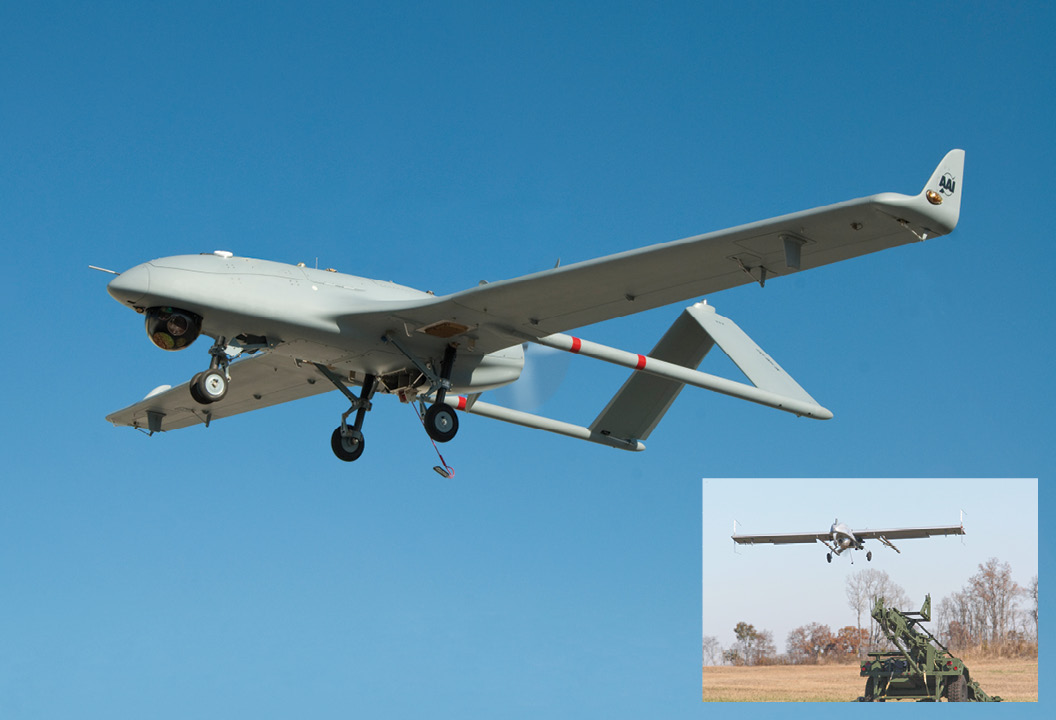
The Shadow M2, built by AAI US, has been tested in Arizona, Maryland, and Utah.
Photo courtesy of AAI.
Angling for Advantage
All of the teams that spoke to Inside Unmanned Systems are now scrambling to entice researchers and UAS entrepreneurs to their states. All but two are offering, or planning to offer, incentives to lure key players—and some of those incentives are quite creative.
While tax breaks are the norm and money to support research is being offered by a number of jurisdictions, economic development officers are also dangling gap loans, venture capital help, interest rate buy downs and, in the case of Oklahoma, an aerospace engineers tax credit. The program gives firms a credit of up to $12,500 per qualified employee per year for five years for each aerospace engineer it hires and a separate credit worth up to $5,000 a year to each aerospace engineer they bring on board. (Those who are interested shouldn’t hesitate. This tax credit is currently set to expire on December 31, 2014.)
The states are competing scientifically as well. With a very few exceptions, like Alaska’s work on using UASs to help ships navigate through ice-choked seas (see page 36), the states will be pursuing similar lines of research. At least 15 of the 19 test range teams will be engaged in finding ways to use UASs to improve agriculture, more than a dozen will be researching UAS technology including airframes, composites, communications and data handling, as well as miniaturization and sense-and-avoid techniques. At least half a dozen teams have institutions that are also working on land or marine autonomous vehicles that could benefit from breakthroughs in UAS technology.
Picking Winners
The level of activity poses a potential dilemma for the FAA. The FAA test ranges are not being paid to do the agency’s research. To make the numbers work both the FAA and the range managers are counting on researchers and companies to choose to come to one of the six FAA test ranges and fly for their own purposes. The six ranges are to gather information (but not propriety data) from these experiments to flesh out the risk models the FAA needs. Though some data is already reported back on every FAA-authorized unmanned flight, the work descriptions released for the ranges suggest a more targeted effort to fill in the gaps. To succeed the FAA would appear to need the six to be particularly competitive and able to attract users.
“The FAA has been pretty clear that they’re not going to tell us what we have to do and I think our activities are going to be driven by the market,” said Jon Greene, the interim executive director of the Atlantic Aviation Partnership and the Virginia Tech UAS test site. “We recognize that what we have to do is help the FAA get the data it needs in order to make risk-based decisions for UAS integration into the NAS,” he added. “What the FAA needs to do is—they need to help us find a way to do that commercial work so that the states stay happy and see the benefit of jobs and we are able to create a sustainable business model.”
The FAA is stepping up to do exactly that. The vast majority of those interviewed, both from the winning and losing teams, said they expect the FAA to prioritize the processing of the six sites’ applications for Certificates of Authority (COAs)–the official permission slips operators need to fly.
“Yes that’s the advantage of these test sites,” said Becklund. “It’s not that the FAA is going to ignore all the other needs for COAs out there in the United States, it’s just that the test sites have priority right now for their internal resources, funding for their people to work on it. It’s a big effort, so our COAs are getting expedited services.”
But there may eventually be more advantages to being one of the six.
Interviewees said the FAA is also considering site COAs that, if approved, would cover multiple missions and changes to aircraft as long as they fall within certain parameters.
“The biggest issue is that the current COAs, besides being geographically specific to airspace, they’re also vehicle specific. So you have to get a new COA every time you want to fly a new vehicle, or even modify substantially a vehicle,” said Matt Scassero, director of the University of Maryland UAS test site. “They’re looking at doing a test site COA where, within certain parameters—size, weight, system, things like that—you could fly anything you want within those parameters within that test site. It just gives you more flexibility to be able to fly new vehicles, modified vehicles, things like that, without having to go back every time to get a brand new COA.”
In time the agency may also authorize the test sites to become designated airworthiness representatives, said interviewees. If granted this would allow the six FAA ranges to be able to determine airworthiness certification for unmanned aircraft.
“That’s probably the biggest advantage of getting named as a test site as anything,” said Becklund. “The expedited, or the priority I should say, on airspace authorization and then also the eventual designation as an airworthiness representative for them.”
The FAA did not respond to a request for comment by press time about the assistance it might be giving the test ranges. The possibility, however, of FAA largess for the six sites is raising concerns among some of those competing with them.
“The FAA test sites were established for one principle reason—to aid the FAA in integration of UAS into the national airspace. What I don’t believe they intended was to give preference in commercial industry development to those six test areas,” said Gary Bartmann, chairman of the board of Rocky Mountain UAS, Colorado’s test site applicant. “If they’re going to change the rules with regard to commercial development they shouldn’t just apply to those six areas, they should apply across the board to whoever has an approved certificate, COAs, and not give an advantage or commercial preference to the areas that were selected for helping them out with integration into the national airspace.”
There is also rising concern about a sudden enforcement of rules putting military airspace largely off limits for UAS testing. The shift, triggered by a query from the FAA to the Department of Defense, appears to have surprised range managers across the country. The vast majority of applications, including those from the six FAA sites, incorporated military airspace into their proposals. The decision has already knocked one test-range operator in Wyoming out of business and has the potential to hamstring other ranges if left unchanged.
That does not mean the nonFAA-test ranges are at odds with the agency. In fact there was across-the-board support for the agency’s efforts among those interviewed and the majority volunteered that they would gladly supply the agency with safety-related data from flights at their ranges.
But when asked if there was a way for research institutions beyond the initial six test ranges to contribute to FAA’s efforts, the agency referred only to its recent announcement of plans to establish a UAS Center of Excellence (COE). “The COE,” according to the agency, “will enable other research institutions to contribute to the FAA’s UAS research and to development efforts.”
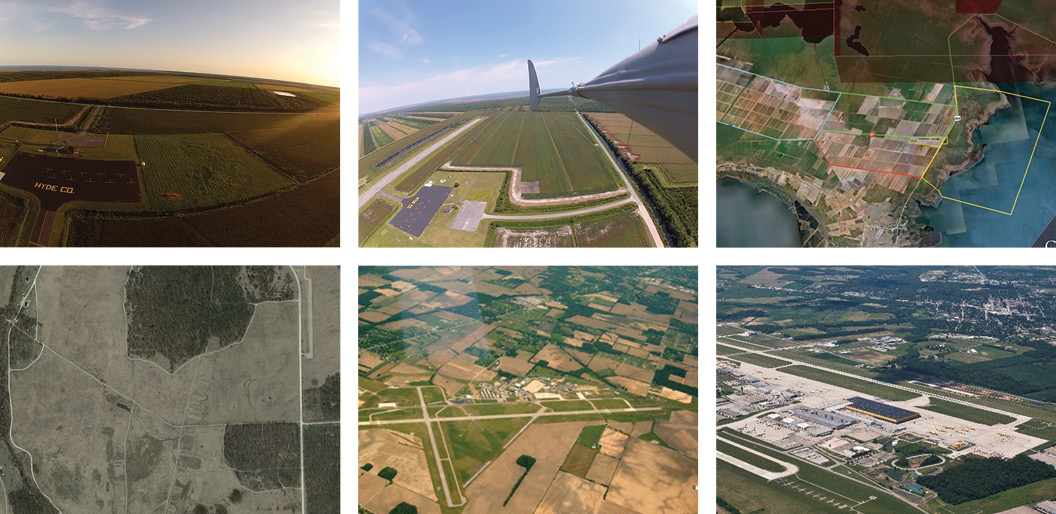
At least 19 states offer test range services for unmanned aircraft.
Photos courtesy of NGAT Center at North Carolina State University, Ohio/Indiana UAS Center & Test Complex, Space Florida.
Defining the Question
A surfeit of test ranges willingly contributing results would seem to be a potential boon for an agency that needs answers. It may be, however, that the FAA is not yet in a position to take advantage of any extra help.
As of March the agency was still zeroing in on the questions that needed to be answered.Dennis Filler, the director of the FAA’s William J. Hughes Technical Center in Atlantic City explained to lawmakers during a roundtable, discussing the ranges and the role of his center. “The research plan is not defined. Once I know more I’ll be able to formulate a strategy on that I can do with the datasets.”
“I don’t have a problem to solve yet, sir,” he added when questioned. “I don’t have a problem that says ‘OK, I need this amount of data.’ ”
Defining research needs appeared to still be in the works as of mid-April. The FAA told Inside Unmanned Systems April 15 it would “route a list of our current UAS research activities and needs to the UAS Test Sites.” Interestingly this list was to include UAS research activities with FAA partner agencies, such as NASA and DoD.
The agency was also still working on a separate but related problem—setting up the data plan for taking in the test results. Getting the plan right is critical, said Greene. “Disparate and dissimilar data provided to the FAA is going to make their job extremely difficult.”
Once the data plan is determined someone needs to create a mechanism—a dedicated website perhaps—for submitting and sharing the information. Several companies and universities have approached the FAA about providing this service, according to interviewees, and the Hughes Technical Center might be tapped for the job, but as of press time, no announcement had been made.
Dollars for Data
The real challenge, however, will come later.After they choose someone to gather the data, someone will have to figure out how to pay them for their efforts because Congress failed to provide the funds needed to support the test ranges’ work.
“They (FAA officials) recognize that capturing, storing and processing and disseminating data is not something that test sites can do for free,” said Greene. “So let’s say it’s a year or two down the road and we’re doing hundreds of test flights a year—in that situation there is going to be a tremendous amount of data. How do we manage that data at no cost to the FAA? I think it’s unrealistic. They agree it’s unrealistic. So I think there’s an expectation there’s going to have to be some remuneration for the cost of collecting that data. It’s just that I don’t think anybody knows exactly how that’s going to happen at the moment.”
Fortunately, there are members of Congress who are at least monitoring the situation. Rep. Frank LoBiondo, R-N.J., chairman of the House Aviation Subcommittee, asked Filler about funding needs during the March 5 roundtable. “We’re at the front edge,” he said, “once we get a little bit further down the roadway, so to speak, are you going to have the resources to do what needs to be done?”
“This is a big problem (to solve) and additional resources would be required at some point,” responded Filler.
Those resources will likely need to pay for more than just the data system. Everything is now dependent on getting enough of the right kind of information from whatever research is being conducted independently by test range users. With this approach, those interviewed agreed, there was no guarantee the agency would get enough of, or the right kind of, information. Aviation officials need resources to be able to fill in the gaps.
“They (the FAA) can’t be directive to us because there’s no funding,” said Becklund.
“What we’re hoping,” Becklund said, “is that there’ll be a larger coordinated effort out there at the national level. When I say that I don’t know if that means coordination directly from the FAA, or using their partners at NASA to help guide the research that needs to be done specifically for airspace integration. Because without that, there’s potential that the test sites will end up at the mercy of industries or other branches of government wanting to do research that is not necessarily aligned with the national goals for airspace integration.… I’m hoping that there’ll be some national coordinated effort to guide, deconflict and coordinate the research done at the test sites so there’s not duplication of effort and a waste of resources.”


